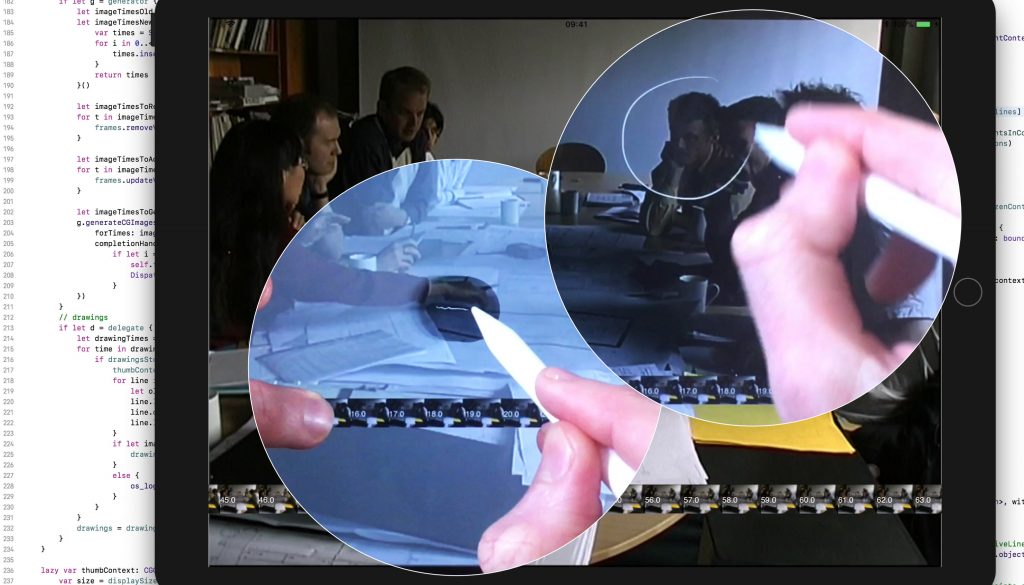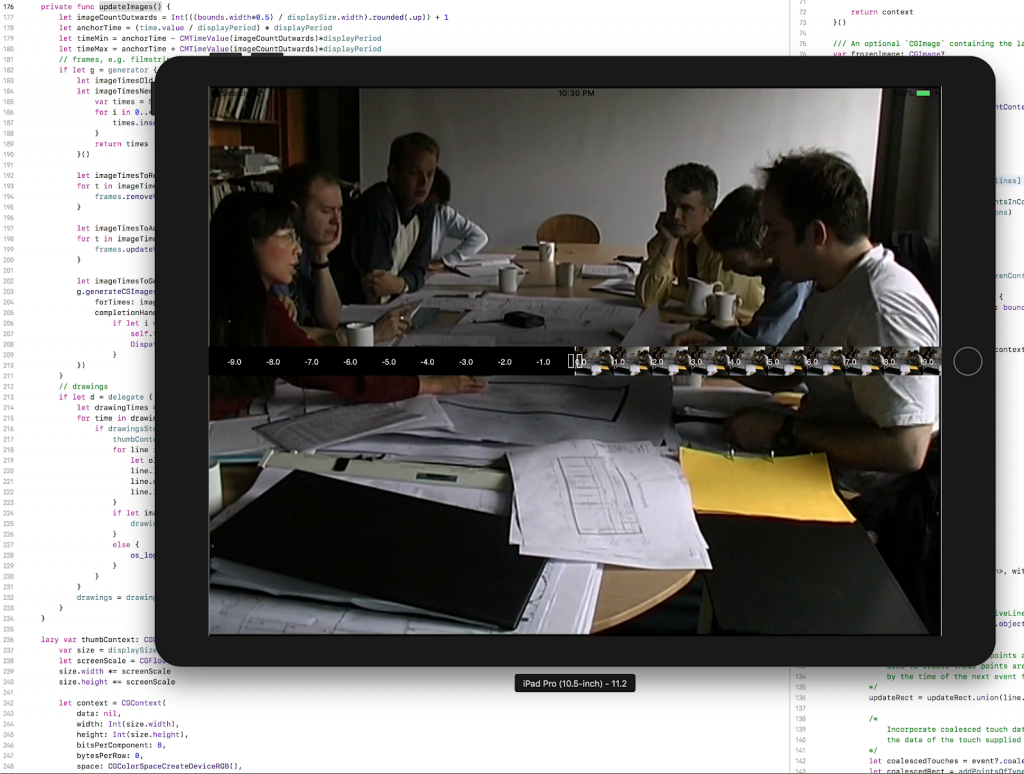Drawing Interactions
Read our (2019) OA paper based on this project: Drawing as transcription: how do graphical techniques inform interaction analysis?
The Drawing Interactions project aims to develop new graphical techniques and tools for the transcription, analysis and presentation of research into social interaction.

In conversation analytic research, Jeffersonian transcripts of talk are usually used with traced outlines or video stills, and these techniques primarily focus on presenting polished research findings for finished publications. But what about the exploratory phases of research such as initial transcription or collaborative inspection at data sessions? The drawing interactions project uses traditional artistic still life and figure drawing techniques and detailed studies of analysts’ work practices as key starting points to inform the development of graphical tools and techniques for the transcription, analysis and presentation of social interaction.
The project team includes myself, Pat Healey, Toby Harris, Claude Heath, and Sophie Skach. We have created a software prototype and a workshop/training format to support the use of drawing for interaction research and the social sciences more generally.
The idea grew out of The Fine Art of Conversation CogSci workshop which explored artistic methods for depicting interaction in classical painting and sculpture. Here is a demo video of the current prototype and a detailed project report outlining developments so far.
Publications
- Albert, S., Heath, C., Skach, S., Harris, M. T., Miller, M., Healey, P. G. T. (2019). Drawing as transcription: how do graphical techniques inform interaction analysis? Social Interaction Video-Based Studies of Human Sociality, 2(1), DOI: 10.7146/si.v2i1.113145
Project links
- A forthcoming workshop at the National Centre for Research Methods, 28th November 2019.
- A short write-up for rolsi.net
- Toby Harris’ Drawing Interactions portfolio page
- The Re/drawing interactions workshop at New Developments in Ethnomethodology, London, March 2018.
- The Drawing Interactions software prototype (source).
- Drawing Interactions Project report April 2018.
- The Fine Art of Conversation workshop, a blog about it by Susan Malaika & its twitter hashtag and pinterest page.
- Claude Heath‘s thesis “Drawing out interaction: lines around shared space“.
Thanks to
- Michael Mair for supporting our workshop at New Developments in Ethnomethodology.
- Queen Mary University of London’s CogSci group and its Media & Arts Technology programme for hosting the March 2018 hack-session.
- Newbury Comics and the Berklee Faculty Fellowship for the generous funding and support.
Drawing Interactions Read More »


